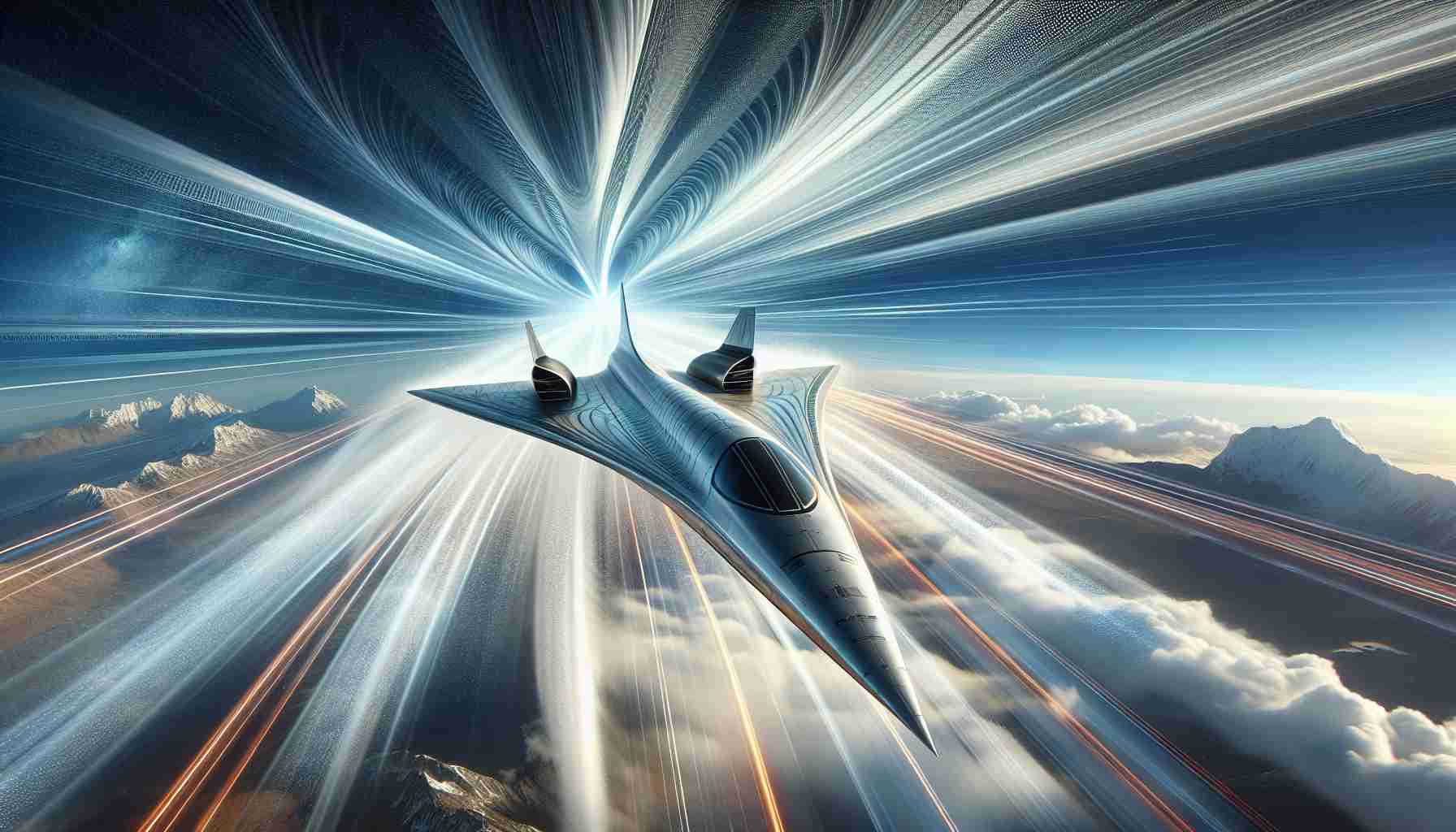Game-Changing Supersonic Aircraft Nears First Flight
The innovative X-59 Quesst, a supersonic jet developed collaboratively by NASA and Lockheed Martin, is gearing up for its debut flight by undergoing critical engine tests. Once operational, this aircraft could slash travel time between London and New York to merely 3.5 hours, revolutionizing air travel.
A Quiet Revolution
For half a century, supersonic flights have been restricted over land in the US and UK due to the disturbance caused by sonic booms. Unlike its predecessor, the Concorde, the X-59 has been crafted to minimize this effect by creating a more subtle “sonic thump,” thanks to its elongated, slender design. This breakthrough might lead to the relaxation of these stringent bans.
Thorough Testing Underway
Engine tests for the X-59 began in late October at Lockheed Martin’s Skunk Works facility in California. Engineers initially conducted low-power trials to ensure the absence of leaks, followed by more intense operational testing. The results have been promising, marking another step towards the X-59’s anticipated 2024 test flight.
In Pursuit of the Sonic Dream
Aerospace companies worldwide are in a fervent race to develop the successor to Concorde, with NASA and Lockheed Martin leading the charge. As they work diligently towards a future where supersonic travel is both accessible and environmentally considerate, the X-59 Quesst stands as a beacon of what might soon be possible, promising to blend speed with serenity.
Unexpected Impacts of Supersonic Travel: Beyond Speed and Silence
The novel X-59 Quesst, a partnership product of NASA and Lockheed Martin, is poised to bring back supersonic travel without the disruptive sonic boom. However, the implications of such a breakthrough extend far beyond mere speed and reduced noise. This article delves into some fascinating aspects and potential controversies surrounding the advent of this new era in aviation.
Economic Ripples and Global Connectivity
The introduction of the X-59 and similar supersonic aircraft into commercial aviation could transform global business and tourism. Imagine international conferences without the need to sacrifice nearly a day for travel. Shorter travel times might significantly boost global trade and tourism, offering businesses unprecedented operational flexibility and individuals a chance to explore the world more easily.
However, this enhanced connectivity could also bring about economic disparities. Less affluent regions, lacking the infrastructure for supersonic travel, might find themselves even more isolated as economic activities concentrate in more developed areas. This raises questions about the equitable distribution of one of the most potent resources: connectivity.
Environmental Considerations: Friend or Foe?
While the design of the X-59 aims to be environmentally friendlier than previous supersonic endeavors, concerns remain. The aircraft’s fuel consumption and emissions are being scrutinized as global climate change pressures increase. Critics argue that increased air travel might counteract the benefits of the reduced noise pollution.
Advocates of supersonic travel assert that such innovations might spur further advancements in greener technologies, leading to more comprehensive solutions. But can the aerospace industry really tackle these environmental challenges, or will the broader adoption of supersonic travel add to the burden on our planet?
Safety and Efficiency: New Challenges
Despite the promise of faster travel, safety and efficiency remain paramount concerns. Existing airports and air traffic control systems may require upgrades to accommodate the unique demands of supersonic planes. Additionally, the higher speeds necessitate more sophisticated safety protocols. How will airlines and regulatory bodies address these challenges without compromising safety?
Public Acceptance: A Cultural Shift?
Public perception is another factor that will play a crucial role. As with any significant technological advancement, there may be resistance from certain segments of the population wary of change. Education regarding the safety and environmental impacts of supersonic travel will be essential to gain widespread acceptance.
Conclusion
The re-emergence of supersonic travel, spearheaded by innovations like the X-59, promises to affect many facets of society. However, it also brings a host of challenges that need to be carefully navigated. The future of air travel might soon become a blend of rapid connectivity and technological responsibility, redefining how we perceive distance and relationships.
Is the world ready for supersonic flight to become commonplace once again? Only time will tell.
For further information, explore these resources:
– NASA
– Lockheed Martin






















